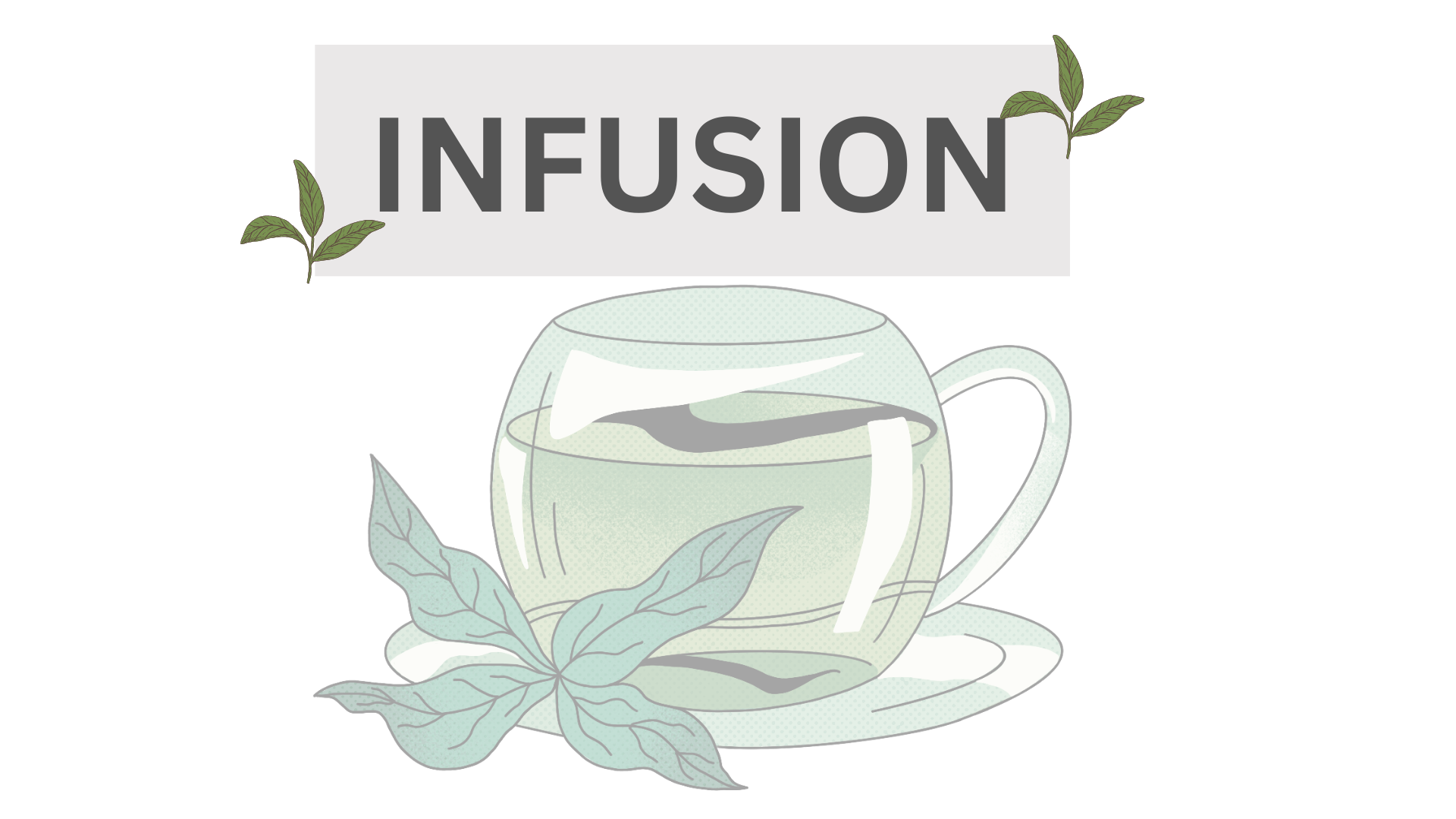Infusion is by far one of the most common methods of preparing traditional medicine. This article explores what infusion is, how it is made, and administered, as well as some examples of infusions.
What is an infusion?
The term infusion was first used in the 15th century and it is derived from the Anglo-french terms infusion, which means liquid extract and the Latin term infūsiōn- & infūsiō, which means pouring in. Hence the word infusion is used to mean the process of making an infusion as well as the infused liquid that results from the infusion process.
According to Singh (2008), an infusion is one of the general techniques used for the extraction of medicinal plants and is mostly applied for galenical preparations.
In simple terms, infusion means brewing. Conventionally, the term infusion is more popular in medicine while brewing is associated with making beverages such as coffee, tea, or alcohol. Nevertheless, both (infusion and brewing) refer to a process of extracting the pharmacological compounds or plant extracts by soaking.
Just for laughs
It’s been said that the book of Hebrews in the bible is called Hebrews because a man is the one that’s supposed to brew i.e., a man is suppose to make coffee or tea for the woman.
Why is an infusion prepared?
Singh (2008) cites the main purpose of preparing an infusion as a means of obtaining the therapeutically desirable compounds and eliminate the inert material. He also adds that infusions play a decisive role in the qualitative and quantitative evaluation of plant extracts.
How is an infusion prepared?
An infusion is prepared by macerating the crude drug for a short period of time with cold or boiling water. These are dilute solutions of the readily soluble constituents of crude drugs.
Singh (2008)
An infusion is prepared by first boiling or heating water and then pouring the boiled (or warm) water over plant materials – such as fresh or dried leaves, flowers, fruits, twigs, bark, and roots. After pouring the water, allow the material to steep in the liquid, by soaking it or letting it sit in the liquid for some time. The heat in the water is what extracts the compounds and active ingredients in the plants. After steeping, remove the plant material by straining the infusion.
The steeping duration is dependent on the type of infusion. For some infusions, steeping can last for a few seconds or minutes, while for others it can be a few hours, days, or months. For example, a tea bag can be steeped for a few seconds or minutes while infused spirits like vodka or gin can be steeped for months.
The resulting liquid from the infusion process is also known as an infusion and it can either be drunk immediately or bottled and refrigerated for future use.
An important thing to note is that: The plant material-to-solvent ratio (i.e., The amount of plant materials and the amount of water to use) is an important consideration when making an infusion as this will directly impact the concentration of the resulting infusion. Unfortunately, this type of information is usually absent or not included with the plant material being sold. And this often leads to overdosing, misuse, and abuse of plant medicine.
Types of infusions and administration methods
How an infusion is administered will be dependent on the type of infusion.
- The most common infusion is tisane also known as herbal infusions, examples include teas or caffeine-free beverages. This infusion is administered orally as tea and extra things can be added to improve its taste and flavor, these include: cream or milk, sugar, and spices.
- Infused spirits or alcohols are another common infusion. With this type of infusion alcohol is used to extract the flavors and active ingredients from the plant material. The extraction process can take hours, days, or months. One of the main differences between herbal infusions and infused alcohols is the amount of time that plant materials remain steep in the liquid. Herbal infusions are steeped for a few seconds or minutes while infused spirits take up to a day, a week, or a month. An example of an infused spirit is vodka infusion, which is vodka infused with different fruits, herbs, and spices
- Herbal remedies: Most herbal remedies are made by infusion because infusion is quicker than a decoction. Infused herbal remedies can be administered orally as tea, anally as enema, as a douche, bathing agent, and by soaking a part of your body (formenting).
- Flavored oils: Ordinary oils can be infused with plant materials to change their properties. For example, coconut oil infused with red onion juice is known in India for making hair to grow faster.
- Infused water: Plain water can be infused to make it more palatable by adding fruits or vegetables. For example, slices of cucumber can be added to plain water to enhance the its taste.
- Intravenous infusion is used in medicine to put infused fluid into the bloodstream. It is used on patients who might be unable to ingest the infusion on their own. Intravenous infusion allows doctors to administer fluids, medication, as well as nutrients directly into a person’s vein.
The device you use to make the infusion is also important. If possible use inert containers to make the infusion. For example, using a metal container, such as galvanized steel, can cause plant material to react with the zinc coating and this can lead to the consumption of metal toxins.
Reference and further reading:
- “Infusion.” Merriam-Webster.com Dictionary, Merriam-Webster, https://www.merriam-webster.com/dictionary/infusion. Accessed 19 June. 2023.
- Singh, J., 2008. Maceration, percolation and infusion techniques for the extraction of medicinal and aromatic plants. Extraction technologies for medicinal and aromatic plants, 67, pp.32-35.
- Yasgur, J. 1998. Yasgur’s Homoeopathic Dictionary and Holistic Health Reference. 4 th ed. Grenville: Van Hoy Publishers.
